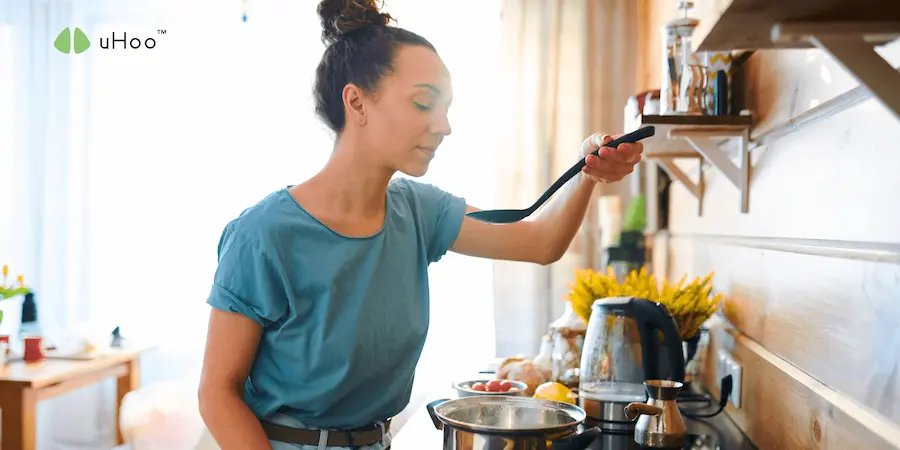It’s easy to focus on the obvious results of cooking: a delicious meal, a clean kitchen, and a lingering scent of spices. But what about the things you can’t see, smell, or taste? The truth is, every time you cook, you’re releasing a complex mix of airborne pollutants that can have a serious impact on your health and home.
Without proper kitchen ventilation, you’re not just breathing in the aroma of dinner; you’re inhaling a cocktail of contaminants that can pose a silent threat. Understanding what these invisible dangers are is the first step toward creating a safer environment.
First and foremost, let’s talk about particulate matter (PM2.5). Frying, searing, and even toasting food can create microscopic particles that are small enough to bypass your body’s natural defenses and penetrate deep into your lungs and bloodstream.
Research has linked high levels of indoor PM2.5 to respiratory issues, heart problems, and other serious health conditions. When you see smoke or steam rising from your pan, you’re witnessing the visible portion of a much larger, invisible cloud of these harmful particles. Without a range hood to capture and remove them for proper kitchen ventilation, they linger in the air, settling on surfaces and being inhaled by every member of your family.
Next, consider the invisible gases, especially if you have a gas stove. Cooking with gas produces nitrogen dioxide (NO2), a known respiratory irritant that can exacerbate conditions like asthma and bronchitis.
In some cases, gas stoves can also produce carbon monoxide (CO), a colorless, odorless, and potentially fatal gas. While the amounts produced by cooking are usually low, repeated or prolonged exposure in a poorly ventilated kitchen can lead to health problems. Without proper kitchen ventilation that physically removes these gases, they simply accumulate in your home.
Finally, there are volatile organic compounds (VOCs) from cooking oils and food itself, as well as excess moisture and grease particles. Moisture can lead to mold growth in hidden areas, while grease can coat walls and ceilings, creating a sticky residue.
A well-designed, ducted range hood is the only solution for proper kitchen ventilation. A ductless system, while a good temporary solution for grease and odor, simply filters and recirculates this same polluted air, leaving the most dangerous contaminants behind.
The dangers of inadequate ventilation are often overlooked because the pollutants are invisible, and their health effects can be slow and cumulative. But ignorance is not a solution. The only way to truly know what you’re really breathing in without proper kitchen ventilation is to measure it. A smart air quality monitor gives you the power to see the invisible.
A device like uHoo can measure key pollutants like PM2.5, carbon monoxide, and nitrogen dioxide in real-time. This allows you to verify the effectiveness of your existing ventilation system, identify potential hidden problems, and most importantly, take control of your home’s air. With uHoo, you can stop guessing about the air you breathe and start making informed decisions to create a truly healthy home environment.

